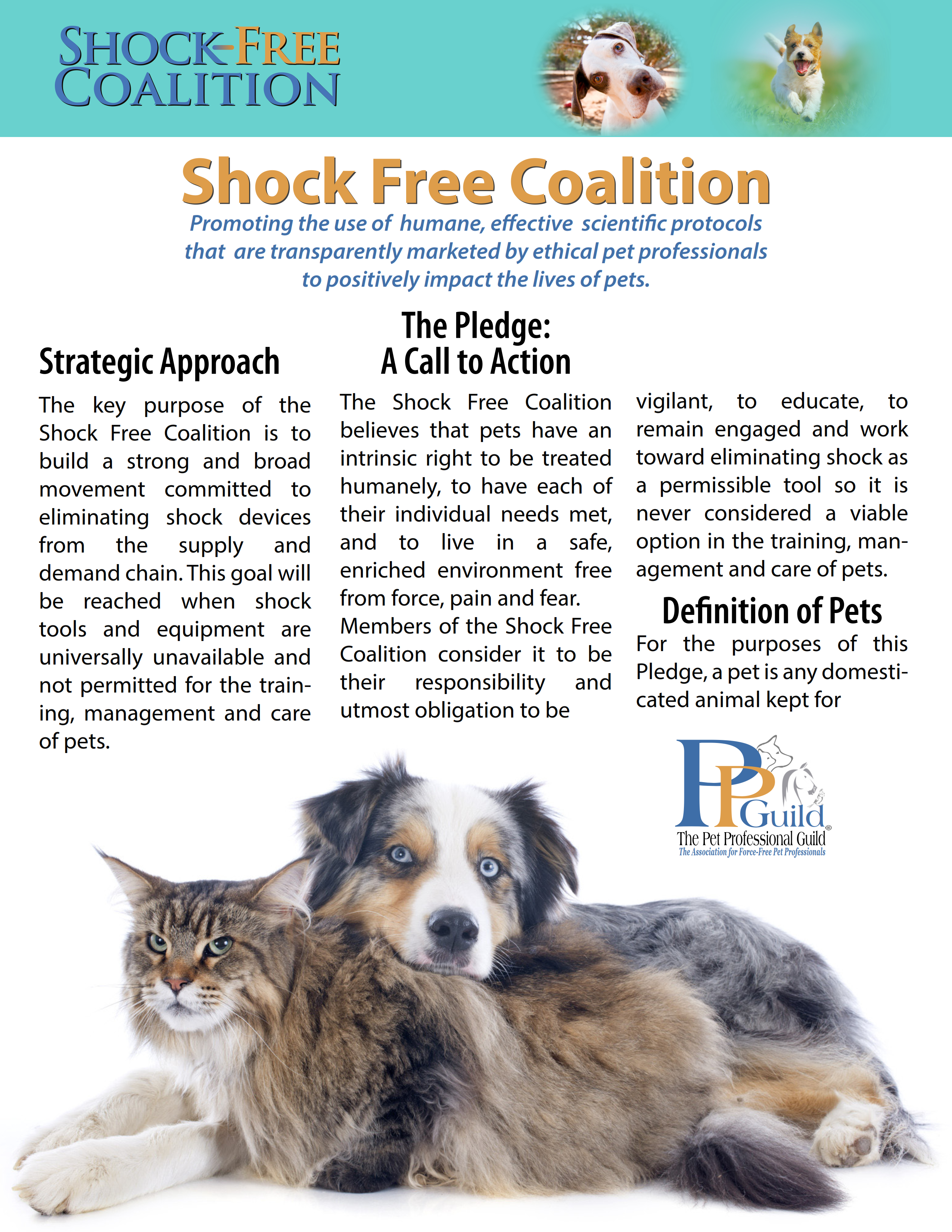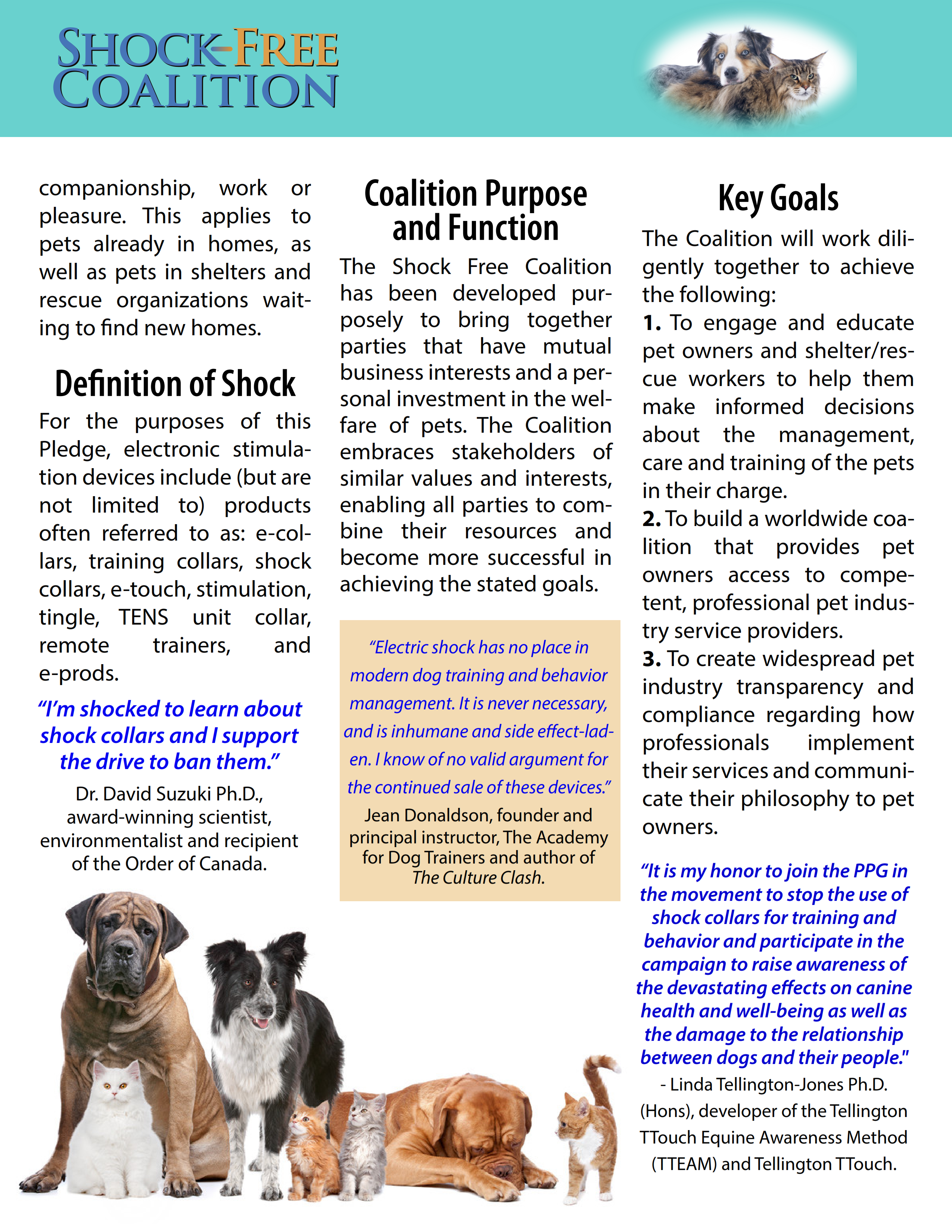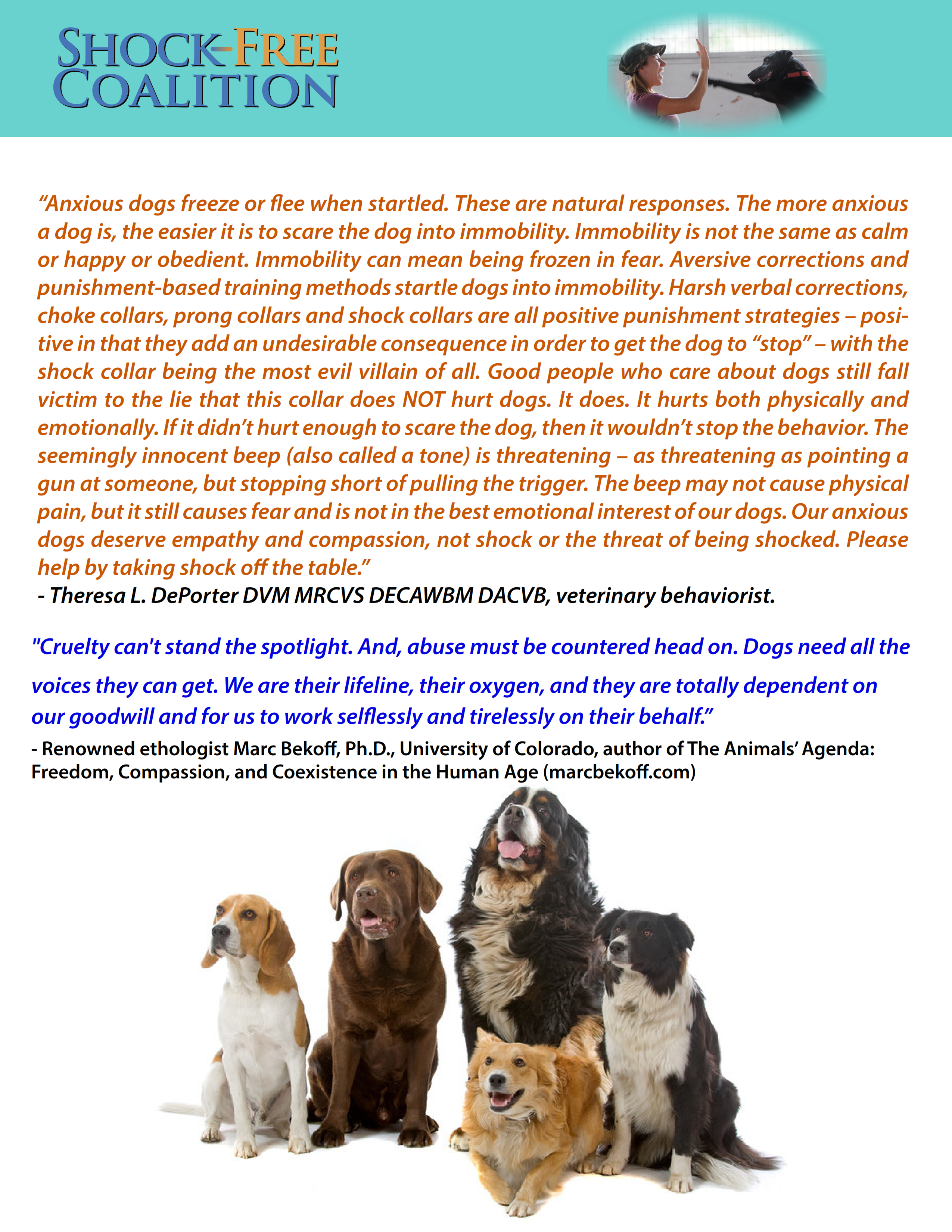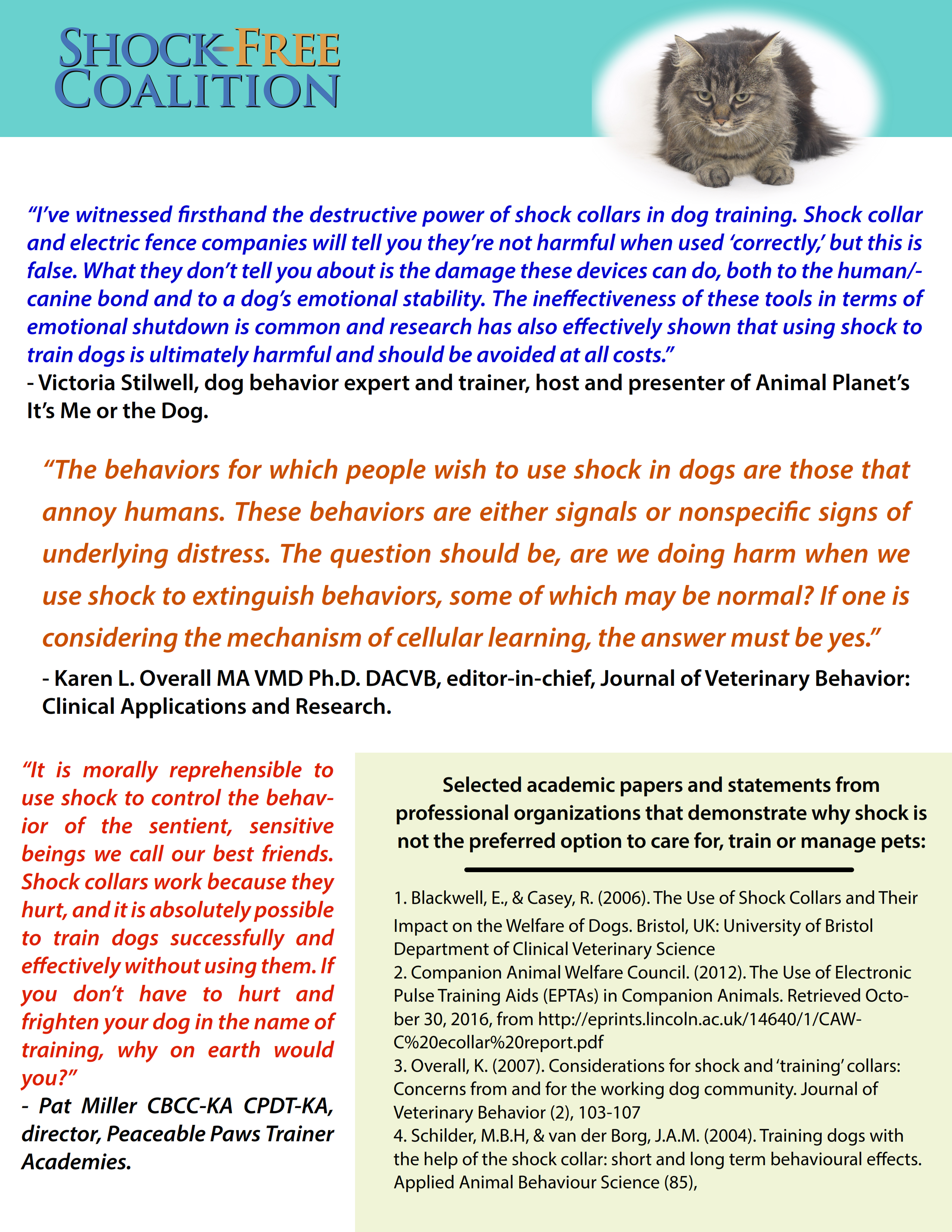- Home
- Divisional Committees
- Advocacy Division
- The Pledge
Strategic Approach
The Pledge: A Call to Action The Shock-Free Coalition believes that pets have an intrinsic right to be treated humanely, to have each of their individual needs met, and to live in a safe, enriched environment free from force, pain and fear. Members of the Shock-Free Coalition consider it to be their responsibility and utmost obligation to be vigilant, to educate, to remain engaged and work toward eliminating shock as a permissible tool so it is never considered a viable option in the training, management and care of pets.  Sign the pledge click here. If you want to download the Pledge Document then please click on the PDF sign Definition of Pets For the purposes of this Pledge, a pet is any domesticated animal kept for companionship, work or pleasure. This applies to pets already in homes, as well pets in shelters and rescue organizations waiting to find new homes. Definition of Shock For the purposes of this Pledge, electronic stimulation devices include (but are not limited to) products often referred to as: e-collars, training collars, shock collars, e-touch, stimulation, tingle, TENS unit collar, remote trainers, and e-prods. Coalition Purpose and Function The Shock-Free Coalition has been developed purposely to bring together parties that have mutual business interests and a personal investment in the welfare of pets. The Coalition embraces stakeholders of similar values and interests, enabling all parties to combine their resources and become more successful in achieving the stated goals. Key Goals The Coalition will work diligently together to achieve the following:
Selected academic papers and statements from professional organizations that demonstrate why shock is not the preferred option to care for, train or manage pets:
Supportive Statements from Pet Industry Leaders
|





 The key purpose of the Shock-Free Coalition is to build a strong and broad movement committed to eliminating shock devices from the supply and demand chain. This goal will be reached when shock tools and equipment are universally unavailable and not permitted for the training, management and care of pets.
The key purpose of the Shock-Free Coalition is to build a strong and broad movement committed to eliminating shock devices from the supply and demand chain. This goal will be reached when shock tools and equipment are universally unavailable and not permitted for the training, management and care of pets.